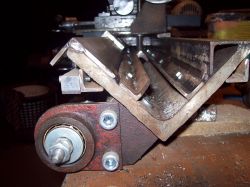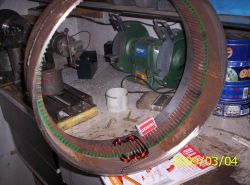Similar, because as the author mentioned a few posts earlier that this film was helpful to him.

Czy wolisz polską wersję strony elektroda?
Nie, dziękuję Przekieruj mnie tamocz0 wrote:How long have you been using this clipper and is there any problem with the bottom bracket guides getting stuck?
jalop wrote:There is a possibility of installing four knives.
Quote:If so, where is the bottom bracket sealed to the bed guides?

Quote:It is a pity that the author did not reveal / add up the cost of execution because they could be higher than the purchase of a larger machine for renovation (sometimes they are literally in the price of scrap metal).
Quote:How long have you been using this clipper and is there any problem with the bottom bracket guides getting stuck?
Quote:I'd love to see the machine you grinded dovetail. I am curious how you solved grinding at an angle. An attachment or maybe an angular vice?

Quote:... made with a ball and a file ...

Freddy wrote:atrix55 wrote:The more well-known name is rather columnara device called a pillar drill
This chain is a bit loose in photo no. 3.
azxxc wrote:Interesting and quite unusual solutions.
I'm also going to make an electric feed (beetle wiper motor), but I'm going to make an adjustment, depending on the potentiometer setting and spindle speed, it was PWM, say from 20 to 100%, will it work -?
Loose chain - after all, the drive is only for travel, so it is not so important, in the case of thread cutting.
PS. out of curiosity, the spindle housing is from the worm gear of the manure loader?
